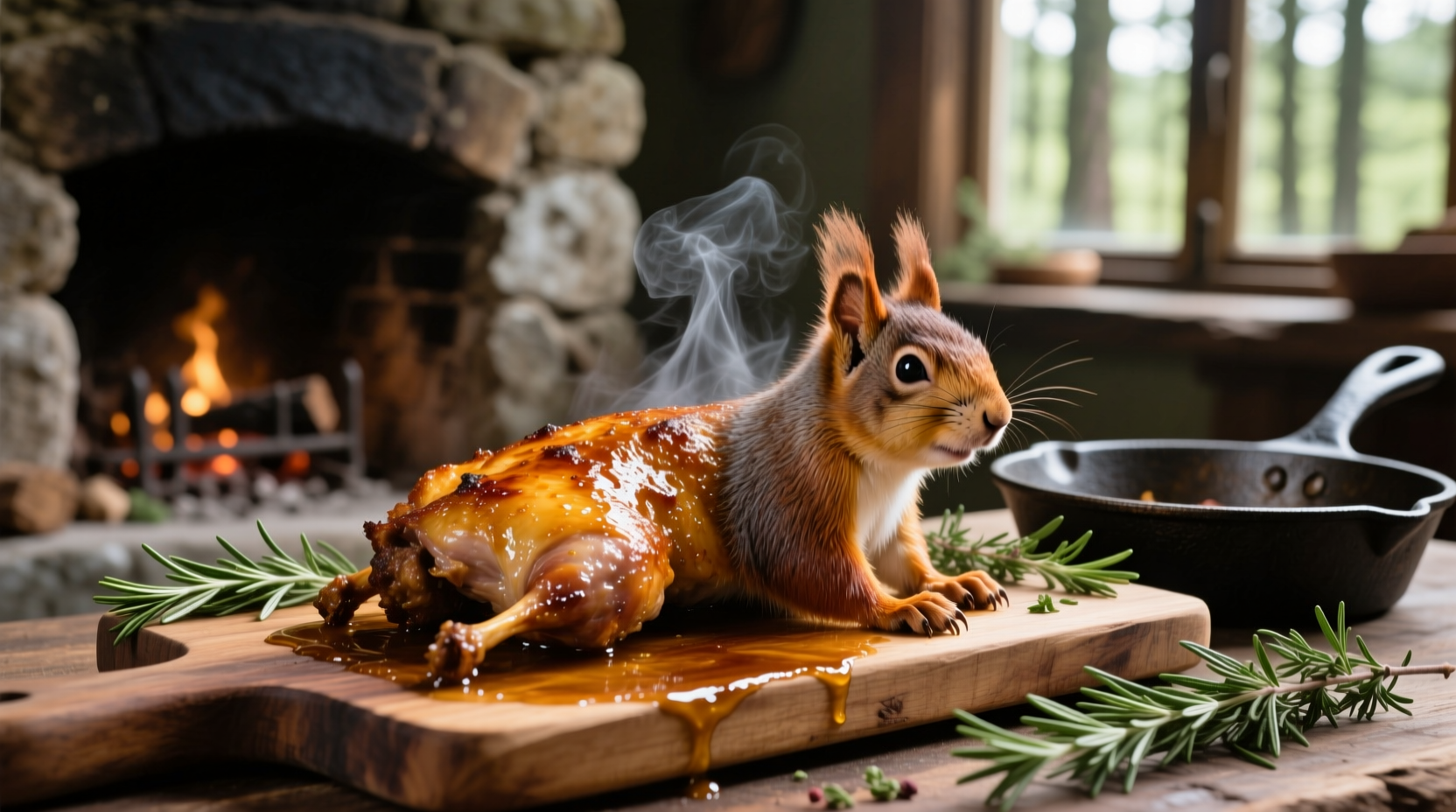Curious about unconventional protein sources? Squirrel meat has sustained hunters and foragers for centuries, offering a sustainable wild game option that's surprisingly accessible in many regions. This comprehensive guide delivers exactly what you need to know: an honest flavor profile based on culinary expertise, essential safety considerations, and practical preparation methods used by experienced foragers. Whether you're a survivalist, culinary adventurer, or simply satisfying curiosity, you'll discover why this overlooked game meat deserves attention—plus critical information to enjoy it safely.
Understanding Squirrel's Unique Flavor Profile
When properly field-dressed and prepared, squirrel meat delivers a distinctive taste experience that surprises many first-time tasters. The flavor sits comfortably between domestic poultry and stronger game meats, making it an ideal introduction to wild game.
"Squirrel offers one of the mildest game flavors available," explains Sarah Johnson, culinary historian specializing in traditional foodways. "Unlike venison or wild boar, its taste won't overwhelm your palate, which explains why it became such a staple during America's frontier period."
| Meat Type | Flavor Intensity | Texture | Best Cooking Methods |
|---|---|---|---|
| Squirrel | Mild gamey (2/5) | Tender when young, can be tough if old | Braising, stewing, slow roasting |
| Rabbit | Mild gamey (2.5/5) | Delicate, lean | Pot roasting, fricassee |
| Chicken | Non-game (0/5) | Firm but tender | Versatile cooking methods |
| Deer (Venison) | Strong gamey (4/5) | Firmer, leaner | Marinating, quick searing |
Factors That Influence Squirrel's Taste
Several elements determine exactly how squirrel will taste when prepared:
- Season and Age: Spring squirrels (juveniles) offer the most tender meat with milder flavor, while older fall squirrels develop stronger game notes
- Diet: Acorn-fed squirrels develop subtle nutty undertones, whereas those eating primarily berries may have fruitier notes
- Preparation Method: Slow cooking transforms tougher cuts into succulent meat, while improper handling intensifies gamey flavors
- Region: Eastern gray squirrels typically taste milder than their western counterparts due to dietary differences
According to USDA Food Safety and Inspection Service guidelines, wild game requires careful handling to prevent foodborne illness. Squirrel meat must reach an internal temperature of 160°F (71°C) to eliminate potential parasites, particularly Trichinella which can occur in wild mammals (USDA FSIS Wild Game Guidelines).
Sourcing Squirrel Safely and Legally
Before considering squirrel as food, understand these critical boundaries:
- Check local hunting regulations—many states permit squirrel hunting during specific seasons with proper licensing
- Avoid urban squirrels which may have consumed contaminated food sources
- Never consume roadkill due to potential bacterial contamination from internal injuries
- Field dress immediately after harvest to prevent spoilage and flavor degradation
The Centers for Disease Control and Prevention specifically warns against consuming animals that appear sick or behave abnormally, as they may carry diseases transmissible to humans (CDC Wildlife Safety Guidelines).
Traditional Preparation Techniques That Work
Squirrel's relatively lean meat benefits from specific preparation methods perfected through generations:
- Cold Water Soak: Soak butchered pieces in salted ice water for 1-2 hours to draw out blood and reduce gamey notes
- Vinegar Marinade: A buttermilk or vinegar-based marinade for 4-6 hours tenderizes while mellowing flavor
- Slow Braising: The traditional frontier method—simmer with onions, herbs, and broth for 2-3 hours until fork-tender
- Pressure Cooking: Modern method that achieves similar tenderness in 45-60 minutes
"The key to great squirrel is treating it like tough chicken thighs," advises Johnson. "Low and slow cooking with adequate moisture transforms what could be stringy meat into something remarkably similar to well-prepared rabbit." Historical cookbooks like The Virginia House-Wife (1824) feature multiple squirrel recipes, confirming its status as reliable frontier protein.

Why Squirrel Isn't Common Commercially
Despite its historical importance, squirrel remains uncommon in modern markets for several practical reasons:
- Labor-intensive harvesting compared to factory-farmed poultry
- Seasonal availability (primarily fall hunting season)
- Lack of commercial breeding infrastructure
- Consumer unfamiliarity with preparation methods
However, sustainable foraging advocates note that squirrel represents an underutilized local protein source with minimal environmental impact compared to industrial meat production. The Eastern gray squirrel population in North America remains robust, with many wildlife agencies considering them a sustainable harvest species.
Practical Tips for First-Time Squirrel Cooks
If you're ready to try squirrel, follow these evidence-based recommendations:
- Start with younger squirrels (spring/summer) for the most tender meat
- Focus on the hind legs and backstraps—these cuts offer the best texture
- Pair with strong flavors like bacon, mushrooms, or wine-based sauces
- Consider squirrel in stews or pot pies where texture concerns are minimized
- Always cook to proper internal temperature using a meat thermometer
Remember that cultural perceptions influence taste expectations. While some may anticipate strong game flavors, properly prepared squirrel often surprises diners with how closely it resembles dark chicken meat—just with more complex, earthy undertones reflecting its natural diet.
Frequently Asked Questions
Below are answers to common questions about squirrel meat based on culinary expertise and food safety guidelines:











 浙公网安备
33010002000092号
浙公网安备
33010002000092号 浙B2-20120091-4
浙B2-20120091-4